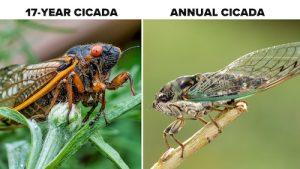In the spring of 2025, Massachusetts and several other states will experience the emergence of Brood XIV, one of the 17-year periodical cicada broods. It’s important to know how to manage the return of cicadas. These cicadas last appeared in 2008 and are anticipated to surface again in large numbers.
In addition to Massachusetts, Brood XIV is expected to emerge across a broad range of states, including parts of Georgia, Kentucky, Indiana, Maryland, North Carolina, New Jersey, New York, Ohio, Pennsylvania, Tennessee, Virginia, and West Virginia. Specific areas with historical cicada activity include central and western Pennsylvania, Long Island in New York, Cape Cod in Massachusetts, and parts of Tennessee and Kentucky. Landscapers operating in these regions should be particularly vigilant and take preventative measures to minimize potential damage.

Effects of Cicadas
While their emergence is a natural phenomenon, it can pose challenges. They surface primarily to mate and lay eggs, with females depositing eggs into tree branches by making small slits, a process known as oviposition. This can lead to “flagging,” where branch tips die due to damage. While mature trees typically recover from this natural pruning, younger trees and shrubs are more vulnerable and can suffer significant harm.
Mitigate Cicada Damage to Trees
To mitigate the impact of cicadas, landscapers should delay the planting of new trees and shrubs until after cicada activity subsides, typically by late June or early July. This ensures that young plants are not exposed to the egg-laying activities of the cicadas, reducing the risk of damage. Additionally, choosing tree species that are less attractive to cicadas, such as evergreens, can be a strategic approach for long-term planning.
For existing young or vulnerable trees, physical barriers can offer protection. Covering these plants with fine netting or fabric row covers can prevent cicadas from accessing the branches to lay eggs. The coverings should be secured tightly around the trunk to ensure cicadas cannot enter from underneath, and the mesh size should be smaller than half an inch to effectively keep cicadas out while allowing sunlight and air to reach the plant.
Regular maintenance is also essential in preparing for the cicada emergence. Pruning dead or damaged branches can reduce the number of potential egg-laying sites, making the landscape less attractive to cicadas. Additionally, ensuring trees are well-watered and mulched will promote overall health, enabling them to better withstand any minor damage caused by cicadas. Especially important after the drought we experienced last fall into the winter. With proper preparation and timely interventions, you can minimize potential damage and maintain the health of landscapes during this period.
